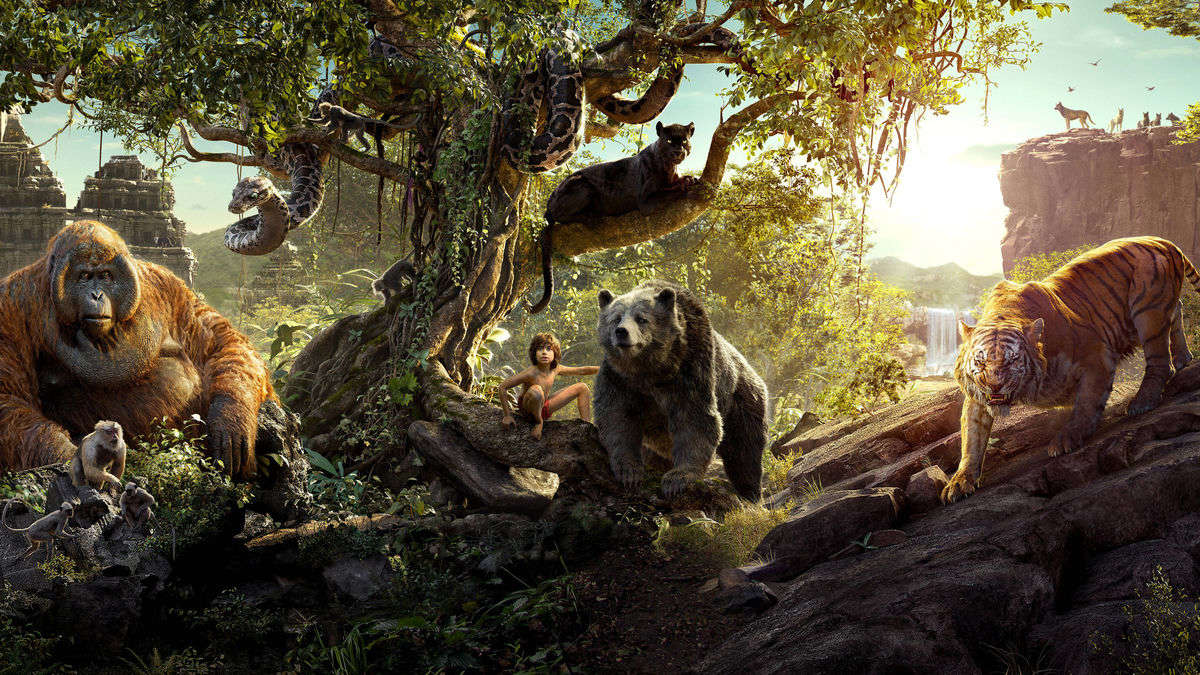Create a free profile to get unlimited access to exclusive videos, sweepstakes, and more!
Could a real-life Mowgli exist? The Science Behind the Fiction of feral children

It's been just five years since Disney's live-action The Jungle Book made nearly $1 billion, but the origin story of Rudyard Kipling's beloved tale hails from much further back in time. The animated film on which Jon Favreau's remake is based is of course much older, having been released in October 1967. And, the book on which that film is loosely based was published in 1894, at a time when tales of children living peacefully with animals seemed a little less unreal.
It's a story, or collection of stories, about abandonment and found family, and it tickles the parts of our minds that are still connected in some ways to the wild world from whence we sprang in times not remembered. The story questions whether we're really so far removed from the wild and if it's possible — through intent or accident — to go back there.
Could a child raised in the wilderness really thrive like a native animal? Or, on the flip side, could an animal become more human-like if it were raised in civilization?
WILD CHILDREN
Stories of wild children — those raised by animals without human contact — date back to the age of myth. The story of Romulus and Remus tells of the founding of Rome in 750 BC, though the first written account was penned nearly 400 years later. Still, the notion of children raised by wolves is ancient.
For centuries these stories were relegated almost entirely to myth. Then, in the 17th century, these children seemingly emerged from the wilderness. That isn't to suggest that wild children didn't exist before the 1600s, it's probably more the case that we simply became enamored of them at that time and began recording their stories. Over the next couple of centuries, numerous wild children were discovered. At least one, "Peter the Wild Boy," was kept as a sort of pet by King George I. Attempts at reintroduction to society were made but with little success.
For the most part, these children retained their acquired non-human behaviors and struggled to adapt to contemporaneous living or to acquire language. Their differences in behavior caused some at the time to wonder if they were, in fact, members of a different species altogether. For a brief time, Homo ferens — or "feral men" — were included in a list of distinct human species.
Whether Kipling was directly inspired by any of these wild children is unconfirmed, though one child in particular, Dina Sanichar, makes a good candidate. He was discovered in India in 1867, less than two decades before the Jungle Book stories would be published. And, like Mowgli, he spent his childhood among wolves.
NURTURE VS. NATURE
Stories of these children, living outside the bounds of modern human society, are captivating in the way they illustrate just how fragile our so-called civility is. If they teach us one thing, it's that our default setting isn't very different from other non-human animals and we avoid reversion primarily through learned behavior.
Nature may give us the potential to reach heights otherwise unseen in the animal kingdom, but it's nurture that ensures we do it. Each of us, regardless of personal accomplishment, exists in our current state through a complex combination of innate ability and the slow accumulation of skill hard-won over thousands and tens of thousands of years.
If a lack of human exposure during developmental years is enough to undo thousands of years of modernity, it's easy then, to wonder if that same human exposure might increase the abilities of at least some non-human animals. Is it possible, for instance, for a great ape to become more like a human if only we treat them as such? This is, for better or worse, a question that has not only been asked but answered. More than once.
In 1931, Luella and Winthrop Kellogg brought a chimpanzee named Gua to live with them and their 10-month-old son, Donald. Gua was 7-and-a-half months old at the time. For the next nine months, the Kelloggs raised Gua and Donald together in an attempt to see the effects of the environment on their respective development. Both were subjected to stringent testing in a number of developmental areas and, for a while, Gua was ahead of Donald.
It was only when language came into play that Donald pulled ahead. Gua, of course, could not speak and Donald began to mimic her calls. In terms of communication, the Kelloggs achieved the exact opposite result from the one they were hoping for. Instead of Gua learning to behave like a human, Donald learned to behave as a chimp. The Kelloggs ended their experiment.
This wasn't the last attempt to bridge the gap between humans and non-human apes by way of immersion. Unfortunately, these experiments often end in tragedy for the ape. Take Lucy, another chimpanzee raised by humans, as a human.
She learned to dress herself, eat with silverware, and communicate via sign language. This last accomplishment is, perhaps, the primary area in which these experiments succeed. It's clear that some apes do have the potential for at least limited language, and it can be brought out through exposure to humans. However, it should be noted that those same language skills are already in use by great apes, and their natural gestural language appears to follow some of the same rules as human language.
What the researchers accomplished with Lucy and great apes like her was more like teaching her a new language and less like teaching her to communicate for the first time. They also accomplished something more sinister by robbing Lucy of the skills she would need to live among other chimpanzees — the consequences of which became vitally important when, in 1977, Lucy was returned to the wild. It did not go well.
Lucy struggled to acclimate to a way of living with which she was totally unfamiliar. Lucy never really found a home in the wild and eventually disappeared, likely killed by poachers.
The desire to approach the line between human and non-human, to better understand where we come from, is understandable and wholly natural. But it's important to remember the cost, both to us and to the animals we bring into our world. Because, if wild children and great apes like Gua and Lucy tell us anything, it's that you can't visit another world without being irrevocably changed by it.














